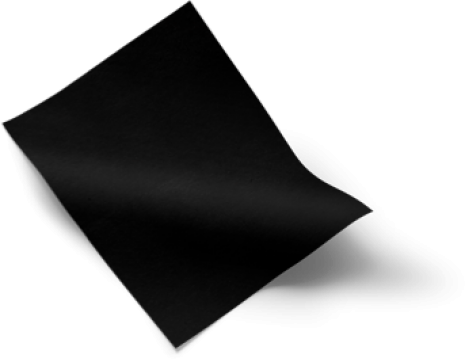Ships brought ashore on the Torres Strait and careened in preparation for cleaning the hull.
Humans are strange. While enjoying pure nature, the sun, and the sea, we simultaneously develop technical things that should improve our lives but ultimately disconnect us from the best invention ever: life.
Television, mobile phones, and electric cars are all state-of-the-art technology, but they do not improve the quality of nature. Those who love being on the water see the beauty of nature but pollute and poison marine life (often without knowing it).
Of course, certain aspects of life still need technical improvement, such as the most effective method for maintaining a ship’s hull. This was a challenge hundreds of years ago and remains so today. Every boat in the water must fight against unexpected visitors that attach themselves to the hull, including algae, mussels, and barnacles. Finding a balanced solution that does not harm sea life would demonstrate the utmost respect for its beauty. And the good news is: today you can.
The invention of copper as an antifouling agent
Long ago, someone discovered that copper had a strong algae-repellent effect. The Phoenicians and Romans applied thin copper plates to ship hulls to prevent fouling in the sea. In the 18th century, the British Royal Navy started covering wooden ships with copper plates, which proved very effective against barnacles and shipworms. However, as time passed, wooden ships were replaced by iron and steel hulls, and copper plating was no longer viable due to galvanic corrosion.
Mankind struggled to enhance the anti-fouling process, but the first copper compound anti-fouling paint was developed in the mid-1800s. Companies such as International Paint (AkzoNobel), Hempel, and Jotun refined copper oxide-based paint coatings at the beginning of the 20th century, setting the global standard.
Unaware of the calamity beneath us, we have used copper oxide antifouling paint for decades. At first, no one observed underwater for long enough to assess and understand the effects of copper oxide on marine life. Thankfully, we are becoming more informed as we recognise that copper oxide is deadly to numerous aquatic species today. It is scientifically proven that copper oxide in antifouling paint significantly impacts marine ecosystems.
Toxicity to Marine Organisms
Copper ions released from antifouling paints are highly toxic to many marine organisms, including algae, molluscs, crustaceans, and fish. Plankton, the foundation of marine food chains, is particularly vulnerable. Copper ions interfere with photosynthesis and cellular processes, reducing plankton populations, which impacts all organisms relying on them for food.
A 2019 study in Marine Pollution Bulletin investigated trace metal bioaccumulation in a marine food web, including phytoplankton, zooplankton, and small pelagic fish. The researchers found that copper concentrations decreased continuously from smaller plankton to fish, indicating significant bioaccumulation in lower trophic levels.
Another Marine Pollution study conducted in 2022 evaluated copper levels in five marinas in Puget Sound, Washington. The findings indicated that copper accumulates in marinas at higher concentrations than outside, with more enclosed marinas showing elevated levels.
Research on the effects of copper contamination on a rocky intertidal predator-prey interaction demonstrated that copper exposure increased barnacle mortality and reduced predation by dogwhelks. This suggests that copper pollution can alter ecological interactions and affect community dynamics.
Bioaccumulation and Food Chain Impacts
Copper can bioaccumulate in marine organisms, which builds up in tissues over time. Predators that consume contaminated prey are exposed to even higher concentrations, leading to toxic effects at multiple levels of the food chain.
Scientific Evidence: Research in Journal of Animal Ecology (2022) found that bioaccumulated copper in bivalves (e.g., mussels) caused reduced reproduction rates in seabirds and fish that consumed them.
Disruption of Sediment Ecosystems
Copper contamination in marine sediments has been scientifically shown to adversely affect seafloor ecosystems, particularly benthic (sea-floor) communities. Elevated copper levels can reduce biodiversity, alter species composition, and impair ecological functions. Copper particles sink and accumulate in marine sediments, persisting for long periods. This disrupts benthic (seafloor) ecosystems, as organisms like worms and shellfish that live in sediments are exposed to toxic concentrations.
Studies in Environmental Toxicology and Chemistry (2017) show that copper-contaminated sediments significantly reduce biodiversity and the abundance of benthic organisms.
Biodiversity Reduction
Studies demonstrate that sediments with high copper concentrations are associated with decreased species diversity and abundance among benthic macroinvertebrates. For instance, research indicated that contamination in certain reservoirs led to significant bioaccumulation of copper in chironomid larvae, adversely affecting their populations.
Community Alterations
Elevated copper levels can cause shifts in benthic community structures, favouring more tolerant species over sensitive ones. This shift can disrupt ecological balance and reduce overall ecosystem resilience. A study found that copper contamination led to significant changes in benthic fauna composition, with certain species notably absent in more polluted areas.
Functional Impairments
Copper exposure has been linked to sub-lethal effects in benthic invertebrates, such as reduced feeding rates and impaired reproduction. These functional impairments can have cascading effects on nutrient cycling and energy flow within seafloor ecosystems.
These findings underscore the importance of monitoring and regulating copper levels in marine environments to protect the health and functionality of seafloor ecosystems.
Hormonal and Developmental Effects
Copper can interfere with hormonal systems, especially in fish and crustaceans, affecting their growth, reproduction, and survival. A study about Aquatic Toxicology (2016) reported that even low concentrations of copper impair reproductive hormones in fish, reducing their ability to reproduce.
Copper oxide (Cu₂O) in antifouling: the invisible killer
Over time, copper pollution alters community structures, reducing species diversity in contaminated areas. Persistent copper in sediments can also limit the recovery of marine habitats even after antifouling use stops.
Research published in Marine Environmental Research (2021) found that copper hotspots in coastal areas had up to 60% lower species diversity compared to uncontaminated areas.
Organotin based anti-fouling
In the 1960s, antifouling paint with organotin compound was launched as The Revolutionary New Thing to use instead of copper-based paints. And indeed, it was amazing: no more drag on ships, improved fuel efficiency and minimal maintenance costs.
The organotin-based antifouling paint with TBT became very popular for commercial, military, and pleasure boats. These paints worked so well by slowly leaking TBT into the water, killing organisms trying to attach to the vessel.
A decade later, scientists noticed severe environmental damage caused by TBT-based antifouling paints such as Shellfish and Oyster Population Decline, Imposex in Marine Snails, where female snails developed male sex organs, leading to population crashes. The toxicity of TBT was not limited to fouling organisms; it affected a wide range of marine species, disrupting ecosystems.
The International Maritime Organization (IMO) moved to ban TBT-based antifouling paints globally, with a complete prohibition taking effect in 2008 under the International Convention on the Control of Harmful Anti-Fouling Systems on Ships. Finally, everybody had to return to ‘good old’ copper-based antifouling.
Alternatives to Copper-Based Antifouling
We now know copper oxide, while effectively preventing biofouling, poses serious risks to marine ecosystems. Regulatory efforts, such as those under the EU’s Biocidal Products Regulation (BPR), aim to reduce copper usage in antifouling paints.
To prevent copper oxide in antifouling from poisoning marine life, everyone in the Blue Economy is working hard to answer the question, “What is the best antifouling for fresh and saltwater?”
Antifouling without biocides seems to be the solution. Still, we also know that this releases another type of pollution: the dissolution of the paint, which causes microplastics to enter the water. If possible, microplastic pollution of the sea is even more dramatic because humans ultimately ingest it by eating fish and shellfish.
That is why solutions that come from nature are also sought, such as biodegradable antifouling agents derived from natural compounds such as capsaicin (found in chili peppers) or milk fat. However, this type of antifouling is still experimental because it doesn’t last that long.
Finsulate is nature at its best
The best environmentally friendly antifouling solution from nature is based on the spines of a sea urchin. Dutch company Finsulate came up with the idea that this could be an ecologically friendly antifouling method. A special foil with little urchin spines was developed to be glued to the underwater hull. The results are astonishing, and the reason why this revolutionary antifouling invention comes with an eight-year warranty.
If you genuinely wish to protect ocean life, it’s time to take action and safeguard your ship hull with Finsulate’s sea urchins. With Finsulate, you are connected with nature more than ever before. Contact us today for a better tomorrow.




